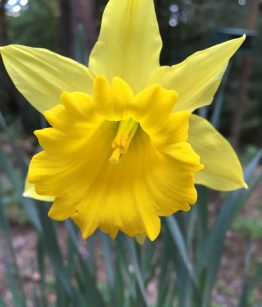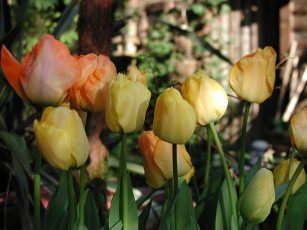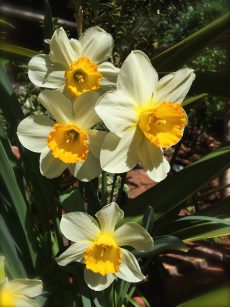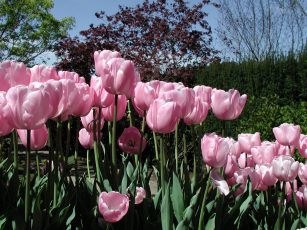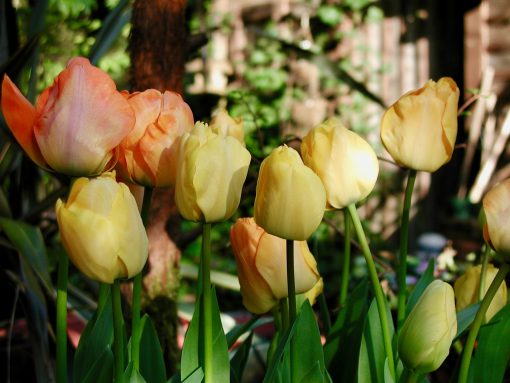
Last year I dropped the ball. Thinking that the daffodils in pots from last year would bloom enough in the spring to satisfy my spring fever I didn?t get any new ones. Well, I was wrong and I?m not making that mistake again. Although it?s a little early to plant bulbs in our area, I have several bags of daffodils and tulips ready and waiting for the ground to cool.The selection of bulbs is always best early in the fall.
My garden is shady all winter and most of spring so my growing conditions aren?t the best. That?s why it?s worth it to me to get some new bulbs each year. Sure, there are a smattering of daffodils that have naturalized on my hillside but it?s a meager display and when spring fever hits, well, you know how hopeful and eager we all are.
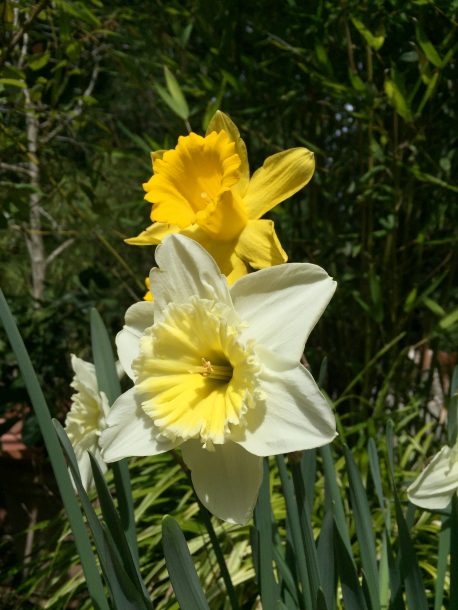
A word to the wise, squirrels, mice and moles are observant and crafty. Once they discover newly planted bulbs, they’ll assume it’s food. Just disturbing the earth is a tip off for them. Daffodils and narcissus bulbs are toxic but if they dig them up then leave them exposed with just a nibble taken, so much for any spring flower display. Protect your bulbs with wire baskets or spray them with foul tasting repellent, letting the spray dry before planting. You can also bury the bulbs with ground up egg shells. Another way to foil squirrels is to plant the bulbs deeply, This only works if you have good drainage, however. Next year, if the squirrels start nibbling the foliage as it emerges try spraying it with hot pepper spray.

One of the more unusual bulbs I grow in pots is Forest Lily (valthemia bracteata). I got several bulbs over 25 years ago and each fall as the bulb re-emerges I look forward to it?s months-long blooming season. The handsome foliage lis thick and wavy, looking somewhat like a succulent but it?s the huge, showy dark pink flower spikes that bloom from February to May that I love. I grow them light shade and allow them to go summer dormant. Valthemia are native to the northern Cape area in South Africa where it grows on rocky slopes along the famous Namaqualand Flower Route.
Another bulb I’ve wanted to grow for a long time is Ixia viridiflora and now I have the chance. A friend divided hers and gave me a handful of bulbs a couple months ago. They need to be completely dry in summer so planting in pots will be perfect for this most striking and unusual bulb. Few plants can beat it for sheer brilliance of flower. Each flower is a brilliant turquoise green with a purple-black eye in the middle. The dark eye is caused by the deep blue sap of the cells of the upper epidermis. The green color is due to the effects of light being refracted from the cell wall and granules embedded in the pale blue cell sap. Amazing flower. I??m looking forward to photographing my own next year.
What about bulbs in the shade? Bulbs that will bloom in light shade are crocus, scilla, tulips, grape hyacinth, leucojum, snowdrops, chionodoxa and lily of the valley. Many from the daffodil clan, including jonquils and narcissus will grow, bloom and naturalize year after year under tree canopies or other lightly shaded areas.
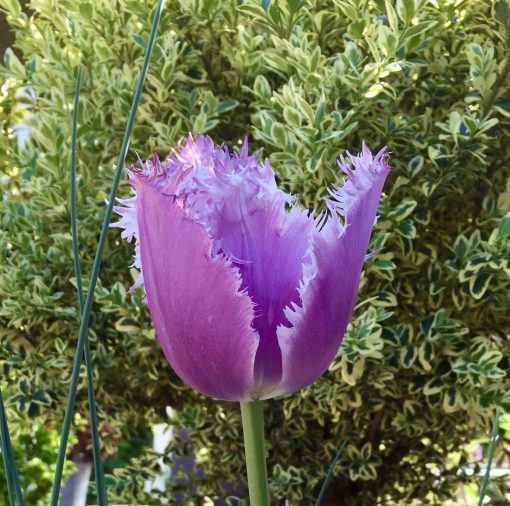
Whatever you bulbs you choose to try this fall, you will be happy you planted some bulbs come spring. And to help them bloom again the following year fertilize them at the time of planting with bulb food or bone meal worked into the soil a couple inches at the bottom of the hole. Mature bulbs respond to an early spring feeding with the same fertilizer.

